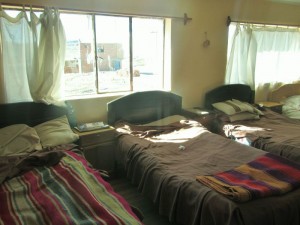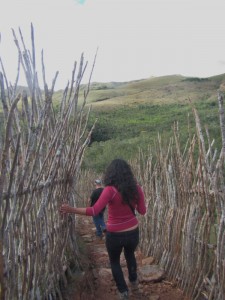Bolivia is investing in tourism, and not just where you might expect. A few weeks ago, I traveled with a bevy of government employees, not-for-profit workers, and consultants to visit several community-built guesthouses in the mountainous Apolobamba region of Bolivia. What makes these projects unique is that they are within, were built by, and will be managed by indigenous communities. What I began to wonder, as I listened to government representatives entreat indigenous representatives to “revive” their culture and rituals, not just for tourists but for themselves, was whether these projects were unique enough to withstand the inevitable changes that increased tourism will bring. Or, to put it another way, whether these communities will be able to grow and change in healthy ways with the incoming influx of foreign people, ideas, values and money. That is, if they come. This publication has already addressed similar themes in its review of the film, “Gringo Trails,” which screened at the Environmental Film Festival at Yale earlier this year. Consider this, then, a first-hand perspective on the calm before the potential storm.
“The anthropologists have come, but not the tourists,” a non-profit worker told me, relaying a statement made by an indigenous leader. Though there are already a few tourists in the region, they are few and far between. This region is not yet an accessible stop on the traditional tourist tour of the Andes, from Peru, to Bolivia, to Argentina. It is somewhat out of the way and the roads are difficult; rocks, occasional stream crossings, and mud wallows exclude all but the largest, toughest vehicles.
The communities we talked to are ready for more visitors, and are preparing to attract them. Thus, it was with a sense of displacement that I experienced these spaces as a sort of tourist before the tourists, noticing the changes these communities had already taken on, and those that I was bringing.

The first guesthouse we visited was in a tiny town with a burnt-out feel, high in the flat expanse of the altiplano, or high planes. The guesthouse, though still unfinished and of middling construction, nevertheless stuck out in stark contrast to the rest of the pueblo, where most of the buildings were build with handmade adobe bricks and the remnants of past houses, and intermingled with those still standing around the town square. Another guesthouse was in a pueblo in a delightful canyon between the mountains, as if the idyll of the American pastoral had secretly been hiding in the Bolivian Andes all along. Though the setting was much more appealing, contrasts remained. This guesthouse, along with the others, featured the only flush toilets and heated showers in town. Will these communities maintain a sense of ownership and pride over their guesthouses, or will they feel a similar displacement to my own, providing amenities for future guests that they themselves do not possess.
In several communities, project leaders talked about how the work and ownership over the new guesthouses would be shared among all of the members of the community, because the guesthouses were there for the benefit of everyone. Though they were pressed by the representatives from the municipal government to secure management in the hands of a few people or families, I admired their objectives. Here, in action, was the sharing economy we so often talk about at the Forestry School. Also in action was the undermining of that sharing economy by the structure of government thinking and its imperatives.

One of our last stops was not to a guesthouse, but to a waterfall. I freely admit that this visit was purely for pleasure. The waterfall is a natural asset that the surrounding village is working towards making more accessible. The trail to the waterfall is hewn out of the rock through, I imagine, hours of time and effort. The materials for the trail were as local as it gets. The rock shards that provided traction and will stall erosion of the dirt stairs were from the same hillside out of which the staircase was hewn, the thin branches that fenced in the upper portion of the trail were from nearby Vitaca trees. The path was one change in the landscape, our visit engendered others. Portions of the steep path remained unfinished, and we pulled up great chunks of mud from these portions as we wound our way to the falls, already leaving a trace.
I didn’t pay to go to the waterfall, but the hope is that soon tourists will. In a region where tourists are an increasingly sought after commodity, it was almost strange not to have done so, but I would have–swimming in the waterfall was a highlight of the trip. How many people will eventually visit, and whether enough people will come for the construction to be a worthwhile investment, remains unknown. Whether enough people will come that the waterfall will see more degradation than just the mark of the trail also remains a vague future. The only certainty is that these communities and their landscapes will change with an increase in tourism. How much, how quickly, and in what ways are yet to be determined.
Edited by David Gonzalez